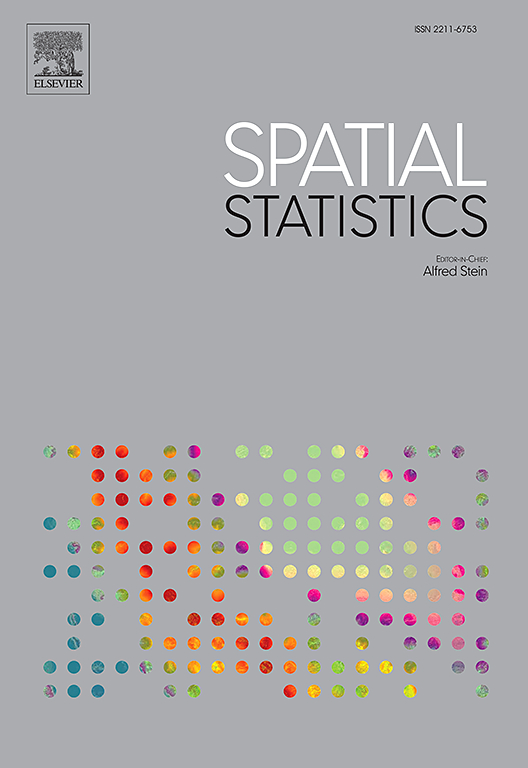随机弹性时空(REST)预测
IF 2.5
2区 数学
Q3 GEOSCIENCES, MULTIDISCIPLINARY
引用次数: 0
摘要
时空过程的统计建模和插值在过去几年中获得了越来越多的相关性。然而,现实世界的数据经常表现出挑战传统方法的特征,如非平稳性和时间偏差。例如,高频太阳辐照度数据通常是在精细的时间尺度上观测到的,但在稀疏的空间采样上,因此需要时空插值来支持太阳能研究。这些数据的非平稳性和相位失调对现有的方法提出了挑战。我们提出随机弹性时空(REST)预测,这是一种结合弹性对准和传统克里格技术来解决时变相位失调的新方法。此外,振幅和相位对准的不确定性可以很容易地在条件模拟框架中量化,而传统的时空方法只处理振幅的不确定性。我们在一个具有挑战性的太阳辐照度数据集上说明了我们的方法,与现有的地质统计和功能数据分析技术相比,我们的方法展示了优越的预测分布。本文章由计算机程序翻译,如有差异,请以英文原文为准。
Random elastic space–time (REST) prediction
Statistical modeling and interpolation of space–time processes has gained increasing relevance over the last few years. However, real world data often exhibit characteristics that challenge conventional methods such as nonstationarity and temporal misalignment. For example, high frequency solar irradiance data are typically observed at fine temporal scales, but at sparse spatial sampling, so space–time interpolation is necessary to support solar energy studies. The nonstationarity and phase misalignment of such data challenges extant approaches. We propose random elastic space–time (REST) prediction, a novel method that addresses temporally-varying phase misalignment by combining elastic alignment and conventional kriging techniques. Moreover, uncertainty in both amplitude and phase alignment can be readily quantified in a conditional simulation framework, whereas conventional space–time methods only address amplitude uncertainty. We illustrate our approach on a challenging solar irradiance dataset, where our method demonstrates superior predictive distributions compared to existing geostatistical and functional data analytic techniques.
求助全文
通过发布文献求助,成功后即可免费获取论文全文。
去求助
来源期刊

Spatial Statistics
GEOSCIENCES, MULTIDISCIPLINARY-MATHEMATICS, INTERDISCIPLINARY APPLICATIONS
CiteScore
4.00
自引率
21.70%
发文量
89
审稿时长
55 days
期刊介绍:
Spatial Statistics publishes articles on the theory and application of spatial and spatio-temporal statistics. It favours manuscripts that present theory generated by new applications, or in which new theory is applied to an important practical case. A purely theoretical study will only rarely be accepted. Pure case studies without methodological development are not acceptable for publication.
Spatial statistics concerns the quantitative analysis of spatial and spatio-temporal data, including their statistical dependencies, accuracy and uncertainties. Methodology for spatial statistics is typically found in probability theory, stochastic modelling and mathematical statistics as well as in information science. Spatial statistics is used in mapping, assessing spatial data quality, sampling design optimisation, modelling of dependence structures, and drawing of valid inference from a limited set of spatio-temporal data.
 求助内容:
求助内容: 应助结果提醒方式:
应助结果提醒方式:


